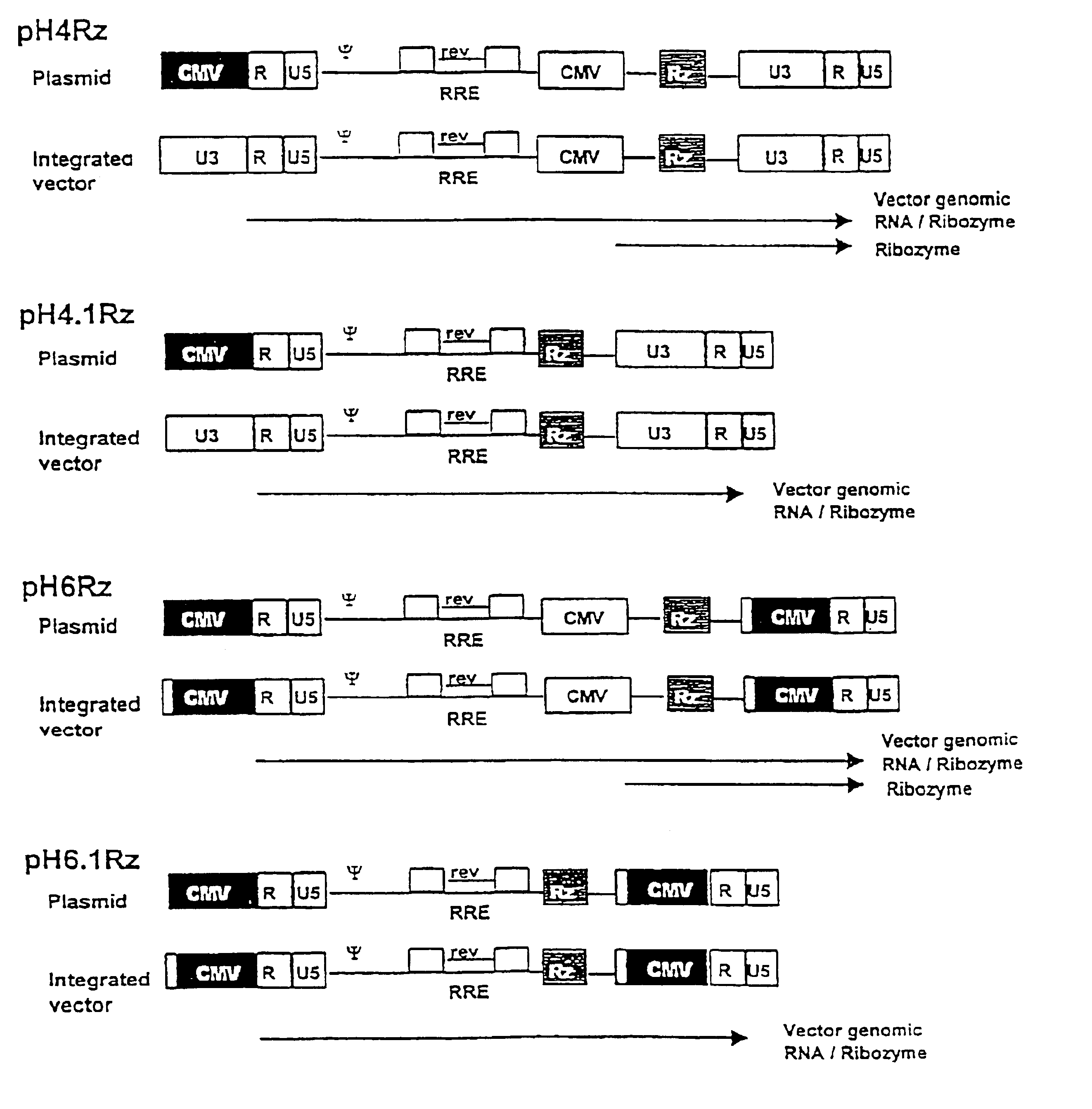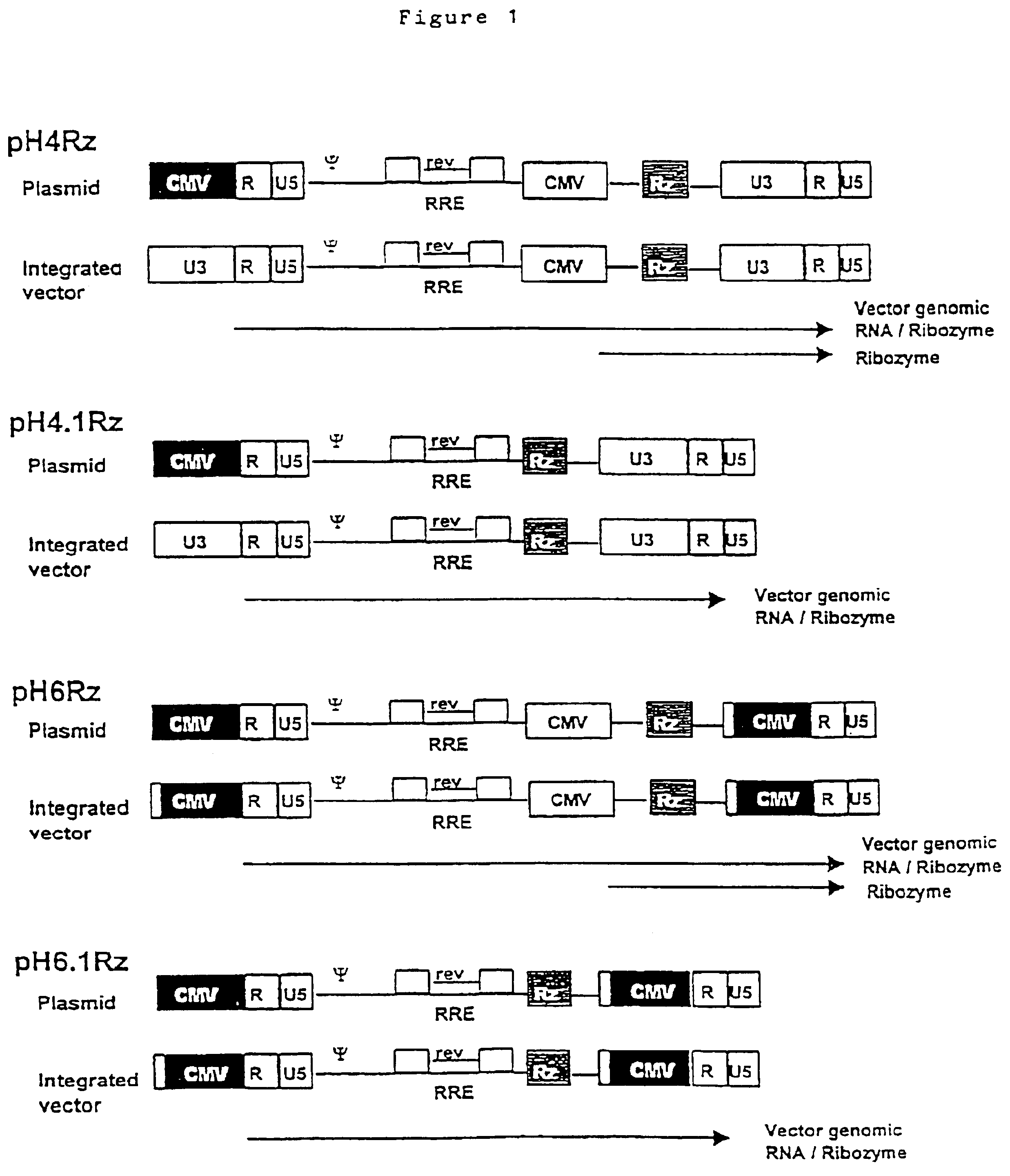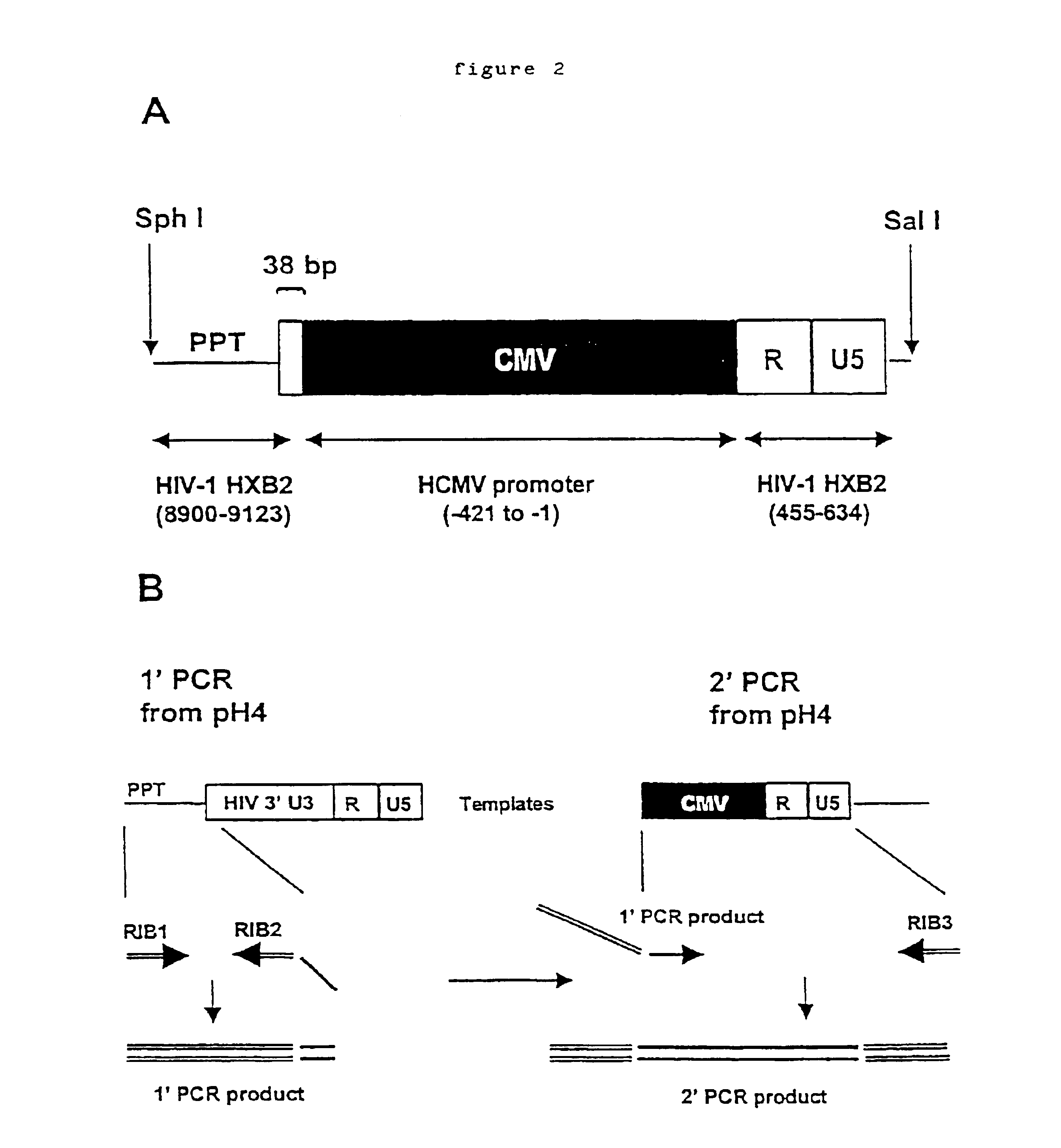Anti-viral vectors
- Summary
- Abstract
- Description
- Claims
- Application Information
AI Technical Summary
Benefits of technology
Problems solved by technology
Method used
Image
Examples
reference example 1--
Construction of a Ribozyme-encoding Genome
The HIV gag.pol sequence was codon optimised (FIG. 4 and SEQ I.D. No. 1) and synthesised using overlapping oligos of around 40 nucleotides. This has three advantages. Firstly it allows an HIV based vector to carry ribozymes and other therapeutic factors. Secondly the codon optimisation generates a higher vector titre due to a higher level of gene expression. Thirdly gag.pol expression becomes rev independent which allows the use of anti-rev or RRE factors.
Conserved sequences within gag.pol were identified by reference to the HIV Sequence database at Los Alamos National Laboratory (http: / / hiv-web.lanl.gov / ) and used to design ribozymes. Because of the variability between subtypes of HIV-1 the ribozymes were designed to cleave the predominant subtype within North America, Latin America and the Caribbean, Europe, Japan and Australia; that is subtype B. The sites chosen were cross-referenced with the synthetic gagpol sequence to ensure that the...
reference example 2--
Construction of a Packaging System
The packaging system can take various forms. In a first form of packaging system, the HIV gag, pol components are co-expressed with the HIV env coding sequence. In this case, both the gag, pol and the env coding sequences are altered such that they are resistant to the anti-HIV ribozymes that are built into the genome. At the same time as altering the codon usage to achieve resistance, the codons can be chosen to match the usage pattern of the most highly expressed mammalian genes. This dramatically increases expression levels and so increases titre. A codon optimised HIV env coding sequence has been described by Haas et al. (1996). In the present example, a modified codon optimised HIV env sequence is used (SEQ I.D. No. 3). The corresponding env expression plasmid is designated pSYNgp 160 mn. The modified sequence contains extra motifs not used by Haas et at. The extra sequences were taken from the HIV env sequence of strain MN and codon optimised....
reference example 3
--Vector Particle Production
Vector particles can be produced either from a transient three-plasmid transfection system similar to that described by Soneoka et al. (1995) or from producer cell lines similar to those used for other retroviral vectors (Ory et al., 1996; Srinivasakumar et al., 1997; Yu et al., 1996). These principles are illustrated in FIGS. 7 and 8. For example, by using pH6Rz, pSYNgp and pRV67 (VSV-G expression plasmid) in a three plasmid transfection of 293T cells (FIG. 8), as described by Soneoka et at. (1995), vector particles designated H6Rz-VSV are produced. These transduce the H6Rz genome to CD4+ cells such as C1866 or Jurkat and produce the multitarget ribozymes. HIV replication in these cells is now severely restricted.
PUM
| Property | Measurement | Unit |
|---|---|---|
| Electrical resistance | aaaaa | aaaaa |
Abstract
Description
Claims
Application Information
 Login to View More
Login to View More - R&D
- Intellectual Property
- Life Sciences
- Materials
- Tech Scout
- Unparalleled Data Quality
- Higher Quality Content
- 60% Fewer Hallucinations
Browse by: Latest US Patents, China's latest patents, Technical Efficacy Thesaurus, Application Domain, Technology Topic, Popular Technical Reports.
© 2025 PatSnap. All rights reserved.Legal|Privacy policy|Modern Slavery Act Transparency Statement|Sitemap|About US| Contact US: help@patsnap.com



